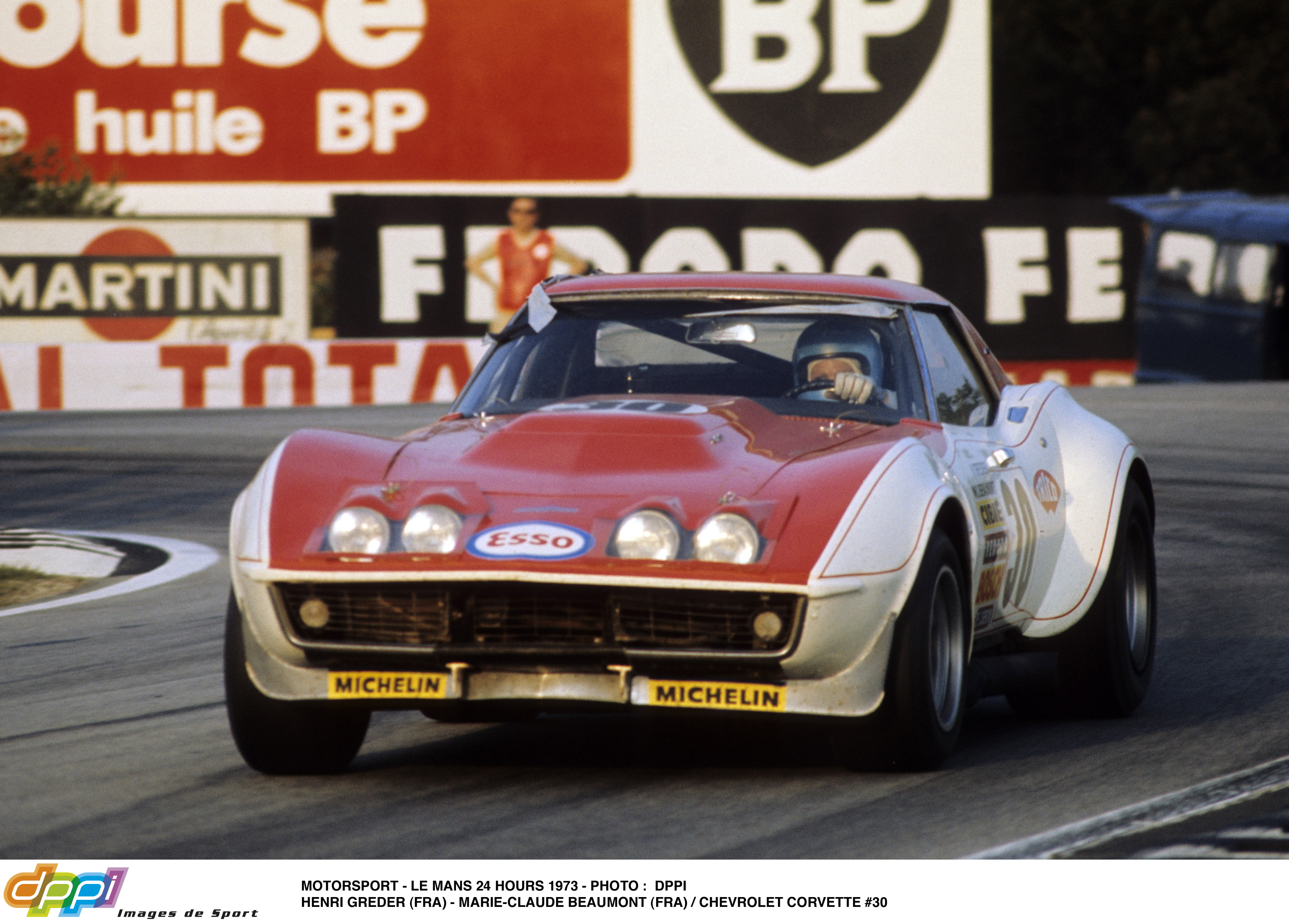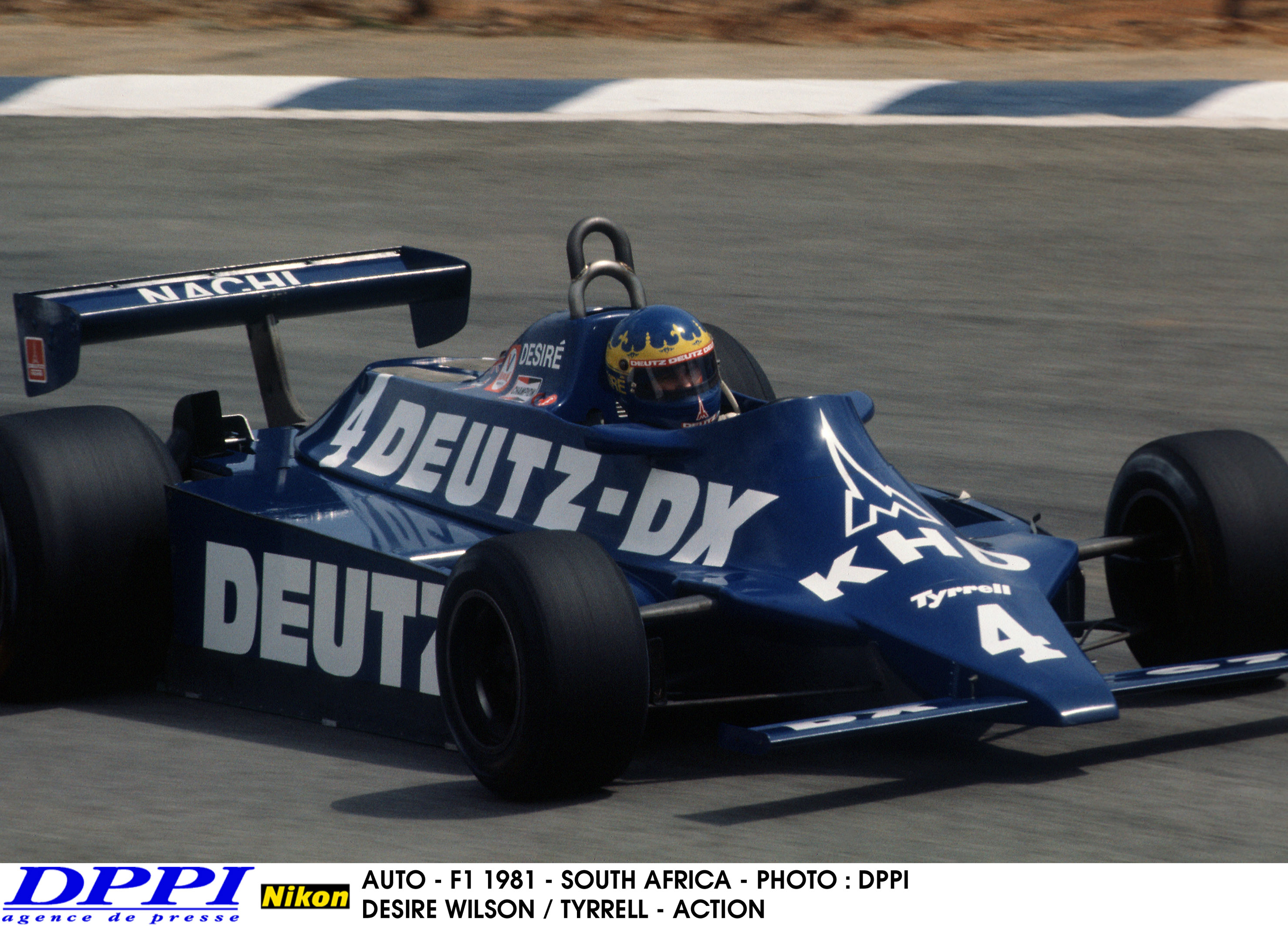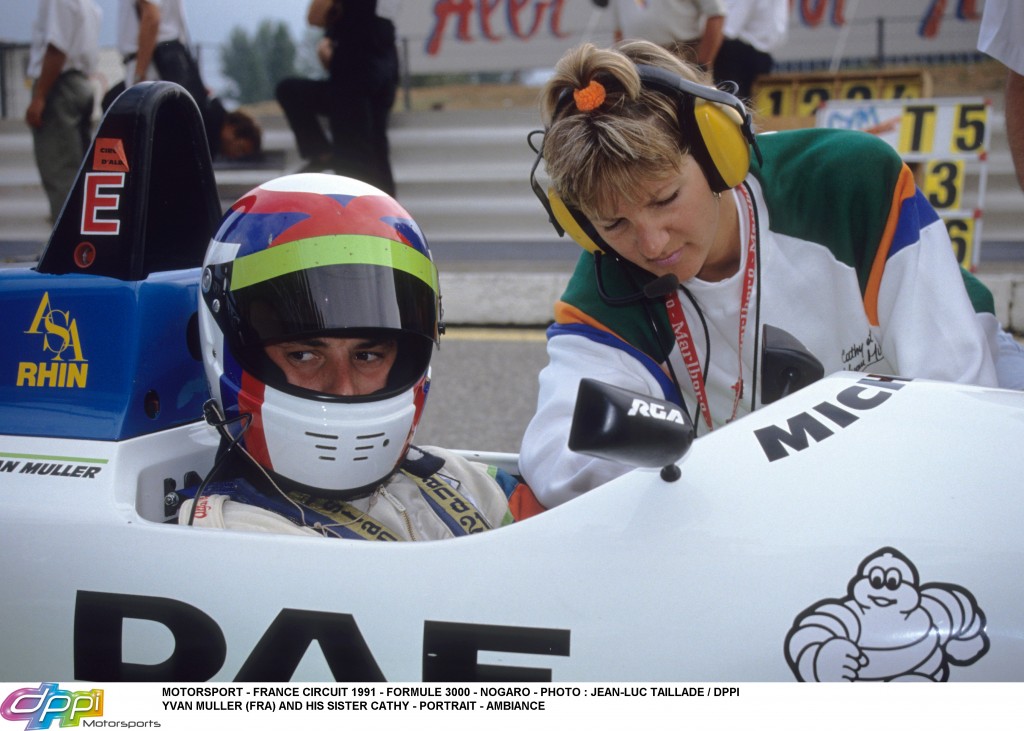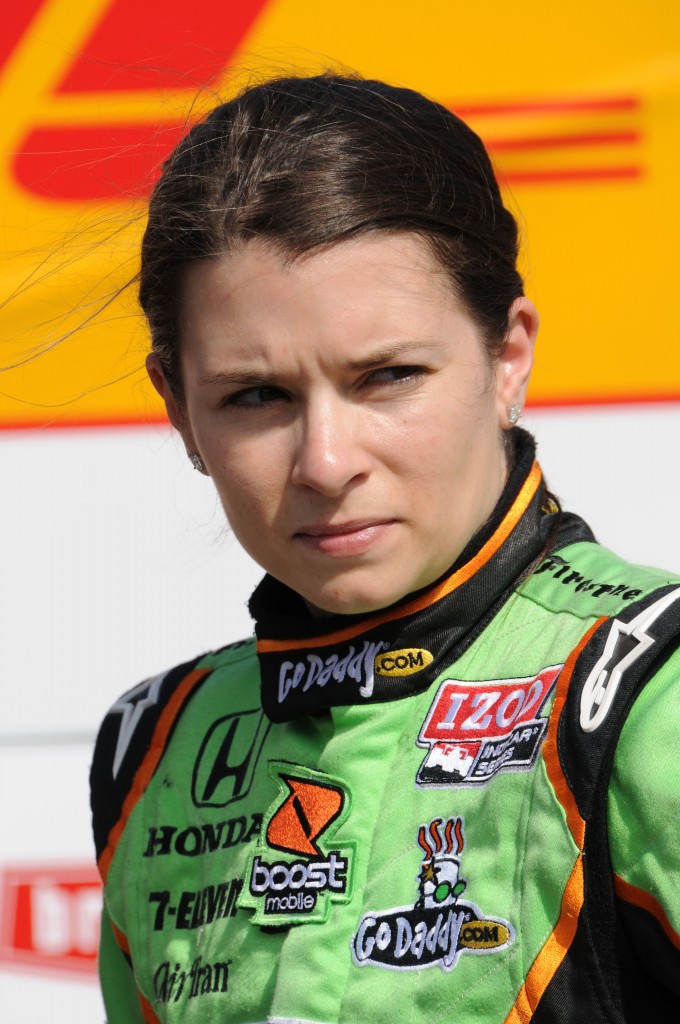It’s a man’s world. Or is it? On International Women’s Day we take a look at some of the women who have left their indelible imprint on the world of motor racing
Story: Anosh Khumbatta
‘It’s a man’s world.’ The phrase has been used through the ages to connote that women are not as capable as men; that they lack the physical and mental fortitude to excel in what have traditionally been considered male-dominated facets of society. Talk of this nature has angered feminists for generations, and as if to prove a point, women have made it out of the home and kitchen as CEOs, heads of state, astronauts, into the armed forces, to the skies and onto the racetrack. Yet the misplaced delusion that women are somehow inferior to men has doggedly followed us into the 21st century.
On the occasion of International Women’s Day we would like to honour 15 ladies who have brushed naysayers aside to leave an indelible mark on motorsport.
1) Camille du Gast ( Born 30 May, 1868; Died 24 April, 1942)
An adventurous woman widowed young, Camille du Gast was the first woman to consistently race automobiles at an international level. She was bitten by the racing bug when she witnessed the start of the Paris-Lyon road race in 1900, and competed the very next year in the Paris-Berlin race, driving a 20 hp Panhard a total distance of 1,135 km. She competed in similar long-distance events every year, until the French government, in 1904, banned women from racing automobiles citing ‘feminine nervousness’. Unable to rally, but still afflicted with a need for speed, Madame du Gast moved on to successfully racing motor boats.
2) Hellé Nice (Born 15 December, 1900; Died 1 October, 1984)

Born Mariette Hélène Delangle, Hellé Nice was a successful model and dancer in Paris during the early 1920s. Imbued with a love of speed, Nice took to downhill skiing, until an accident damaged her knee and put a stop to her career as well as her sport. In 1929 got behind the wheel of a racecar and immediately won the Grand Prix Féminin at the Montlhéry track, breaking records in the process. People noticed, she secured sponsorship and endorsement deals, and was beating notable male drivers on both sides of the pond, until the War put an end to racing. A few of her distance records still stand.
3) Anne Hall (Born 30 May, 1919; Died 19 January, 2003)
An ambulance driver during the Second World War, and then one of Britain’s most famous rally drivers, Anne Hall, entered her first race in 1950 at the age of 31. The mother of three, with her sister Mary Newton by her side, managed to finish seventh in her Jaguar XK120. She won rally trophies from all over the world till retirement in the late 1960s, only to return in 1988, winning the women’s section and placing 18th overall in the Pirelli Classic Marathon, a 3,700 km race through the Alps, driving a 1961 Ford Anglia. She continued to race in classic events until really retiring in 1997.
4) Maria Teresa de Filippis (Born 11 November, 1926; Died 8 January, 2016)
The first woman to make it into the male-dominated world of Formula 1, Maria Teresa de Filippis was truly a pioneer. The Italian starting racing Fiat 500s when she was 22, just to prove to her brothers that she had the right stuff, and was runner-up in the 1954 season of the Italian Sports Car Championship. She participated in five F1 races in 1958 and 1959, driving a Maserati 250F, and although she never won a race in this premier class, just competing was a major achievement.
5) Pat Moss (Born 27 December, 1934; Died 14 October, 2008)
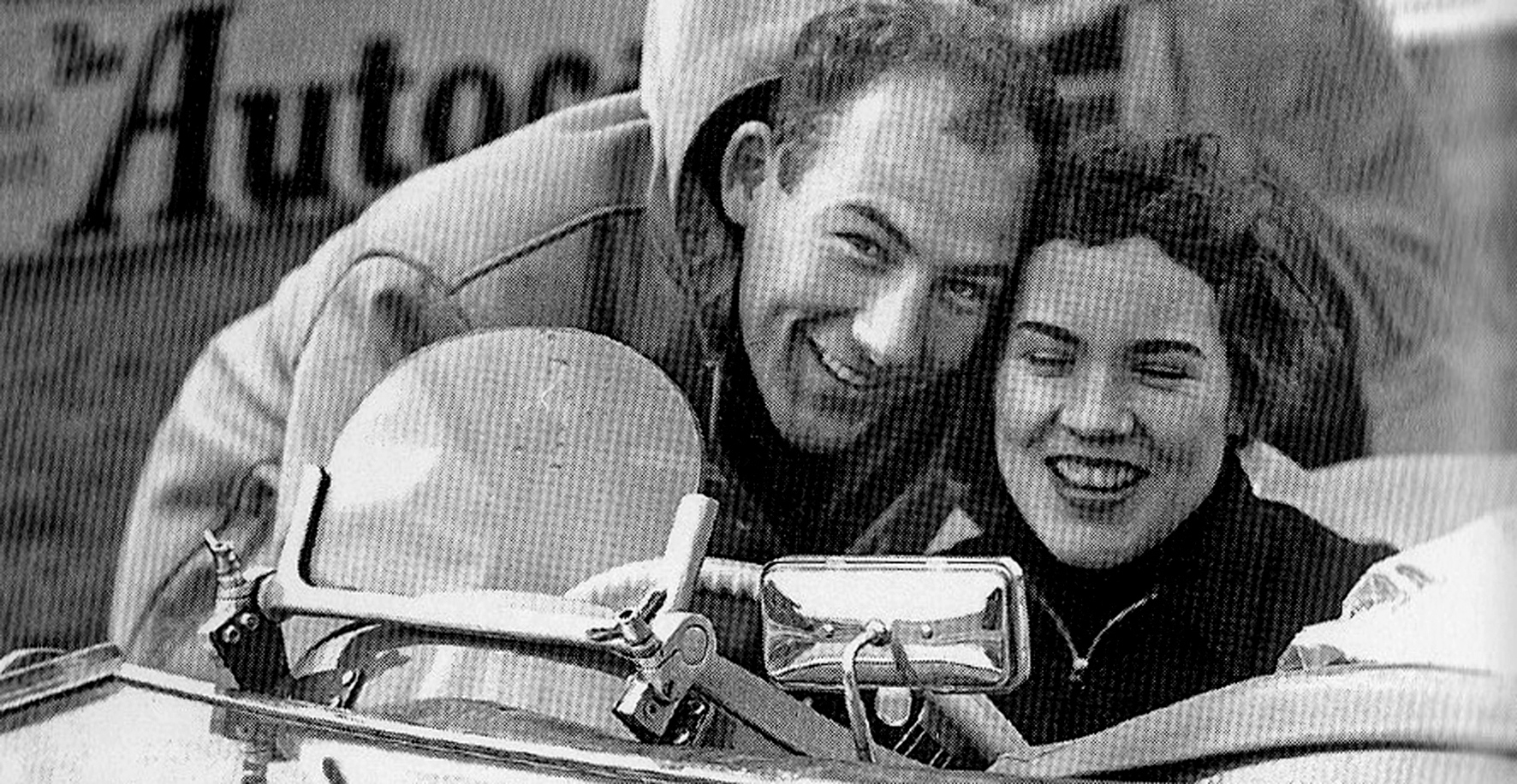
The sister of Sir Sterling Moss learnt to drive from her big brother at age 11, and went on to become one of the most successful female rally drivers in the world. The young Pat Moss’s first love was horses and she was an expert showjumper before switching over to cars. After competing in a few club races around Britain and Europe, her first international rally was in 1955 although she only started winning races two seasons later. She was the European Ladies Rally Champion five times between 1958 and 1965, and co-authored The art and Technique of Driving with her husband Erik Carlsson. She retired from racing in 1974.
6) Denise McCluggage (Born 20 January, 1927; Died 6 May, 2015)
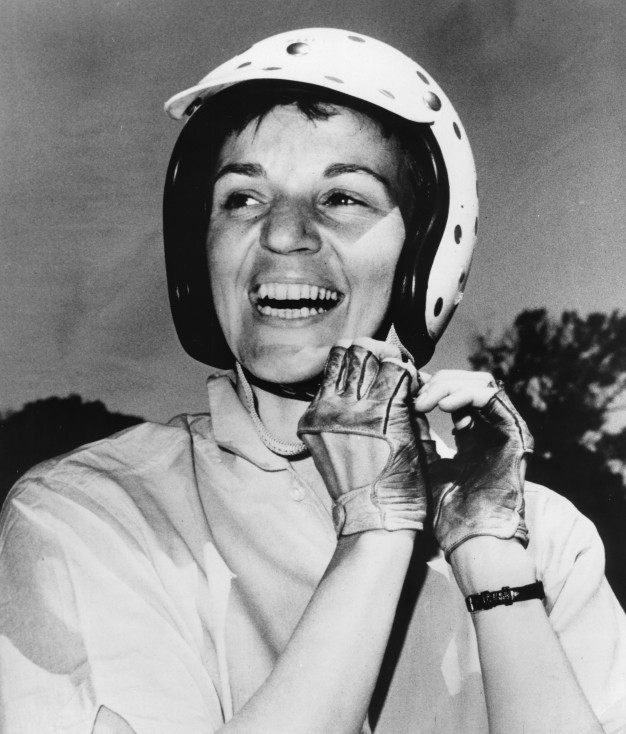
From American motorsport journalist to successfully competing in races in the United States and in Europe, Denise McCluggage sure followed her heart. From 1955 to 1959 she competed in a variety of events, first driving an MG, then a Jaguar XK140MC and later a Porsche 550RS, and always keeping the primarily male starting grid on their toes. In 1959 she tried her hand at rallying, and was immediately picked by the Triumph team to drive in the Cross Canada Rally. It was then a few seasons of rallying before Denise stopped racing and went back to journalism in 1964, and was one of the founders of car magazine Auto Week. She continued writing, primarily about cars and driving till shortly before her death.
7) Marie-Claude Beaumont (Born 17 September, 1941)
The eldest of eight siblings and the daughter of a rally mechanic and driver, the Frenchwoman started her racing career as co-driver to French rally champion Claudine Vanson-Bouchet at age 23. This partnership lasted two years, after which Marie-Claude served as co-driver to Henri Greder, another successful racer. In 1965 she got her first chance to take the wheel for the NSU team, driving an NSU 1000 in the Critérium des Cévennes Rally, and was hired by the team as a works driver for the 1966 season, during which she drove in 15 rallies. In 1967 she tried her hand at circuit racing. Over the coming seasons the all-rounder participated in several circuit, endurance and rally events, driving a variety of cars with continually improving results. During the early 1970s she was a frontrunner at Le Mans, driving Chevrolet Corvettes for a team started by Henri Greder, and by 1975 she was focused completely on circuit racing. She was paired with another great lady of racing, Lella Lombardi, to drive the Alpine-Renault A441 prototype in the European rounds of the World Sportscar Championship. She tested for Formula Two in 1976 and raced again at Le Mans before trading her racing career to work at the Renault press office for a while, then again switching careers to freelance race photography.
8) Lella Lombardi (26 March, 1941 – 3 March, 1992)
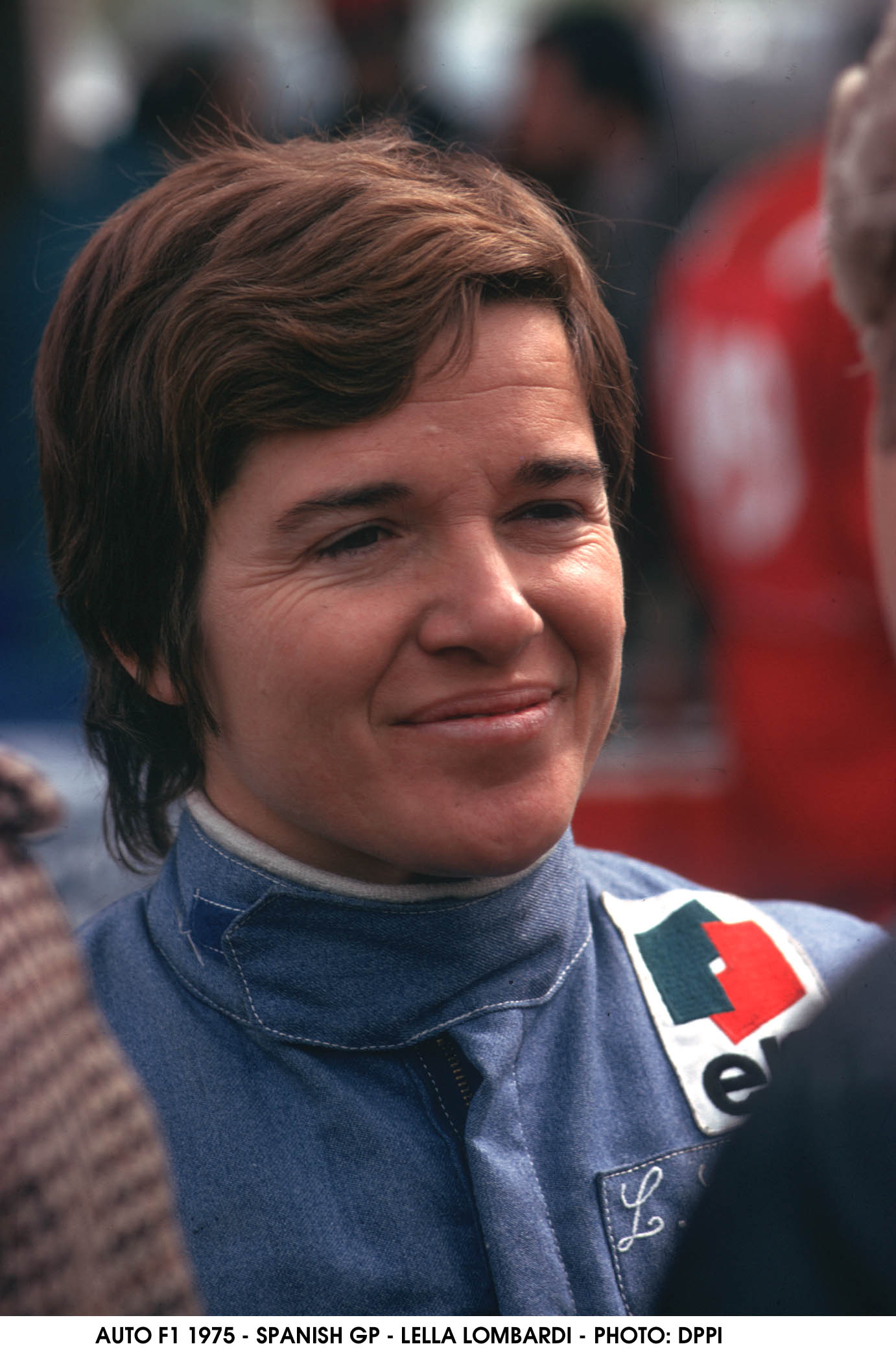
It was 17 years after Maria Teresa de Filippis, that another woman was seen on the F1 grid. Again a determined Italian; Lella Lombardi holds the distinction of being the only woman to ever finish a Formula 1 race in the points, finishing sixth and earning a sole point, that was halved, due to the 1975 Spanish Grand Prix being stopped early. In the same year Lombardi shared driving duties with Marie-Claude Beaumont in the Alpine-Renault at Le Mans, but they had to retire 8 hours into the race due to technical issues. Although she did not continue in F1, Lombardi’s love of racing saw her compete with the best drivers in NASCAR, endurance events at Daytona, Mugello, Nürburgring and Brands Hatch. Her career ended due to poor health in the late 1980s and sadly, she succumbed to cancer in at age 50.
9) Lyn St. James ( Born 13 March, 1947)
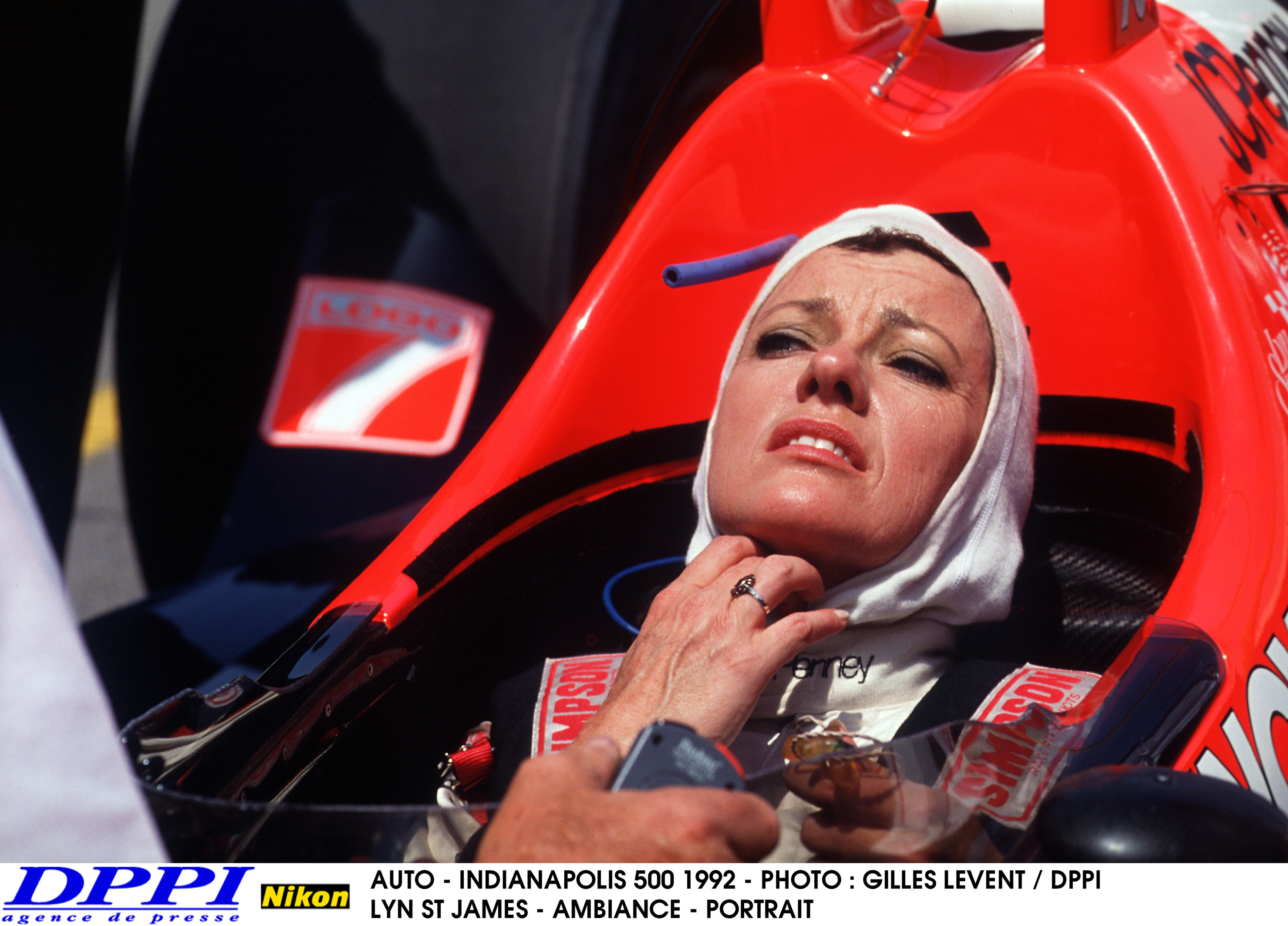
American-born Lyn St. James had a prolific racing career that started in 1973 and lasted over 20 years. She is one of just five women to make it to the starting grid at the Indianapolis 500, and in 1992, became the first woman to win the Indianapolis 500 Rookie of the Year award. She has raced twice at Le Mans, in 1989 and 1991, and tasted victory at the 24 Hours of Daytona in 1987 and 1990. She set a world record for women on a closed course, hitting just over 363 km/h during the 1995 Indy 500 qualifying. Since retiring from racing Lyn has worked on helping more young and talented women find their feet in motorsport.
10) Michèle Mouton (Born 23 June, 1951)

Yet another passionate French racer, Michèle Mouton is probably the most successful female rally driver in history. She first competed in 1974, driving her own 1.6-litre Alpine-Renault A110 in rallys in and around France, finishing fifth twice. She continued racing increasingly powerful machines, and won her first event, the Rally of Spain in a Porsche Carrera RS. Consistent second place finishes that season saw Mouton finish the European Championship runner-up. She moved on to WRC in 1979, and secured a contract with Audi for the 1981 season. Moving up the ranks, Mouton surprised most with a second place in the 1982 WRC season, and continued racing till 1985.
11) Desiré Wilson (Born 26 November, 1953)
An extremely talented South African, Desiré Wilson’s circuit racing achievements are laudable. She had an early start, driving midget cars at age five, and securing second in the South African nationals at just 12 years old. She was a fixture on the Formula Ford grid for years and graduated to F1 for the 1980 and 1981 seasons. Without much success in F1, she moved into IndyCar and endurance events where she made a name for herself. She currently races classic and historic cars, and is a regular at Goodwood.
12) Cathy Muller (Born 21 November, 1962)
Born in France, Cathy Muller was from a young age inspired by the women racers that came before her. She got an early start karting, securing her first big win in the 1979 European Karting Championships. She switched to Formula-style single-seaters in 1981, and broke into the the British Formula 3 Championships in 1984. She retired in 1995 after a colourful career in F3, Formula 3000, and several single-seater championships. She is still a fixture in the paddock managing race teams.
13) Jutta Kleinschmidt (Born 29 August, 1962)
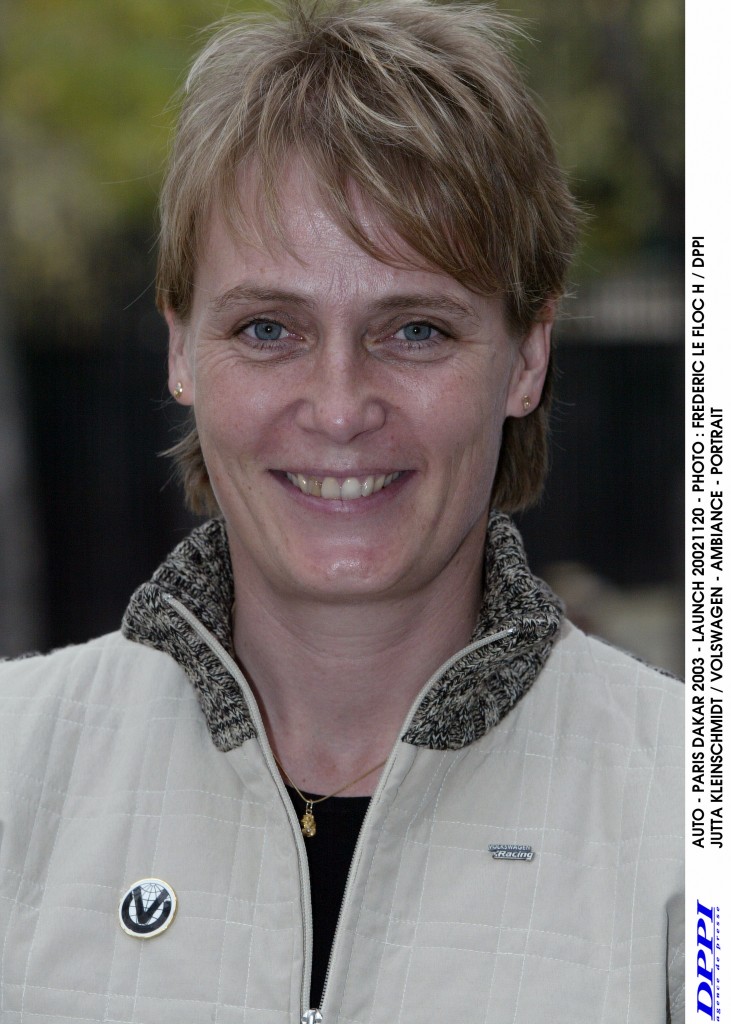
This German racer was definitely a force to be reckoned with out in the desert; in 2001, Jutta Kleinschmidt, became the first woman to win the gruelling Paris Dakar Rally. Her introduction to the race was in 1988 aboard a BMW motorcycle; she switched to cars in 1994, and in 1997 became the first woman to win a stage of the Rally. She has successfully driven for Audi and then BMW, racing the Paris Dakar last in 2007. Unable to stay away from fast cars, Kleinschmidt raced in the Nürburgring 24 Hours race in 2013, 2014, and 2015, driving an Audi TT, with a best result of 64th.
14) María_de_Villota (Born 13 January, 1980; Died 11 October 2013)
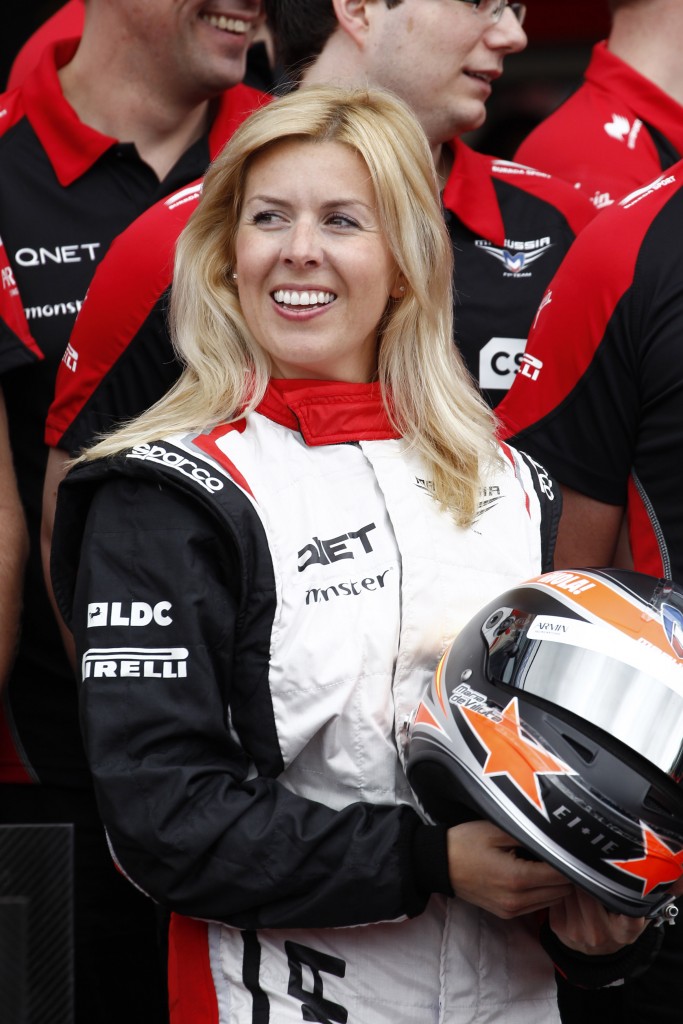
Born in Madrid, the daughter of Spanish racing driver Emilio de Villota, María_de_Villota was the modern-day hope for women in Formula 1, but it was not to be. Starting off in Spanish Formula Toyota in 2001, she moved to the Spanish F3 championship in 2002 and showed great promise. She was signed by the Marussia F1 team as a test driver in 2012, but in a test session at an airfield in England, she slid off the track and into a stationary truck sustaining serious head injuries and losing her right eye. She did seemingly recover and made a few public appearances in the following months, even wrote a book, but was found dead in her hotel room a year and a half after the crash, apparently due to long-term brain damage sustained in the crash.
15) Danica Patrick (Born 25 March 1982)
American-born Danica Patrick is started karting at age 10, and by 16 was racing in the British national series. By 2002 she signed with Rahal Letterman Racing in the US, and consistently placed on the podium in the 2003 season of the Toyota Atlantic Championship. Following the upward trajectory, Patrick drove in the IRL IndyCar Series in 2005, and later that year became only the fourth woman to compete in the Indianapolis 500, finishing in fourth; the best ever finish by a female driver at that venue. Her first pole position came in June that year at Kansas speedway, and she finished the season in 12th place. In 2010 Patrick made the switch to NASCAR and has since been competing at the highest level. Hopefully she can keep the torch burning for women racers everywhere.


